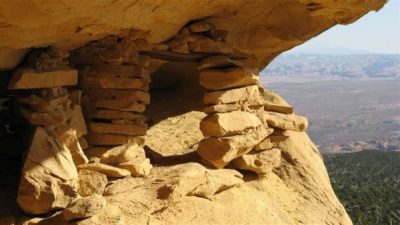Interior Board Overturns US Bureau of Land Management Decision to Replace Native Forests with Exotic Livestock Forage in Grand Staircase-Escalante National Monument
Decision finds BLM ignored cumulative impacts and failed to comply with the Monument’s prohibitions on using non-native seed

The U.S. Department of the Interior’s Board of Land Appeals (IBLA) yesterday set aside a decision by the Bureau of Land Management’s (BLM’s) Grand Staircase-Escalante National Monument and Kanab Field Office to remove more than 30,000 acres of pinyonjuniper forest and sagebrush from the Skutumpah Terrace area within Grand Staircase-Escalante National Monument in Utah. The Southern Utah Wilderness Alliance (SUWA), Western Watersheds Project, The Wilderness Society, and the Grand Canyon Trust appealed the BLM’s February 2019 decision approving the project.
In overturning the BLM’s decision, the IBLA found that the BLM erred because it “failed to take a hard look at the Project’s cumulative impacts on migratory birds under NEPA [National Environmental Policy Act]… [and] erred in determining that using non-native seed… was consistent with the applicable land use plan under FLPMA [Federal Land Policy and Management Act].” Non-native grasses, while preferred by the livestock industry, become invasive weeds in their own right and degrade habitat quality for native wildlife.
The BLM’s decision would have rid the area of pinyon pine and juniper trees by mastication, an intensively surface-disturbing method of vegetation removal that involves shredding trees where they stand by means of a wood chipper/mulcher mounted to a large front-end loader, which is driven cross-country throughout a project area. The plan would also have authorized the destruction of sagebrush by chaining, the practice of ripping shrubs and trees from the ground by dragging large chains between two bulldozers. The Skutumpah Terrace project is featured in a National Geographic story this month.
The four conservation groups that prevailed in the appeal praised the IBLA decision.
“This decision illustrates what should be obvious, which is that destroying native pinyon and juniper forests to plant non-native forage for livestock is bad public policy,” said Kya Marienfeld, Wildlands Attorney for the Southern Utah Wilderness Alliance. “Unfortunately, the BLM is still proceeding with plans to rip up native vegetation from more than 100,000 acres elsewhere in Grand Staircase-Escalante National Monument, and hundreds of thousands of additional acres throughout Utah and the West. Congress needs to step in and ask why the BLM continues to waste taxpayer money on vegetation removal projects that ignore science and its own land management plans.”
“Thanks to an enormous amount of effort and tenacity, the old growth pinyon-juniper woodland plants and wildlife on the Skutumpah Terrace are safe for now from BLM chains and bulldozers,” said Laura Welp of Western Watersheds Project, a former BLM Botanist at GSENM. “Massive vegetation-removal projects like this one interfere with efforts to restore the native plants and animals we cherish.”
“The IBLA acknowledged what the BLM did not: destroying native pinyon and juniper trees on over 130,000 acres of land — that is, Skutumpah combined with two additional pinyon and juniper removal projects being planned in Grand Staircase-Escalante National Monument — just might have significant impacts on birds like pinyon jays, which have declined more than 85 percent,” said Mary O’Brien, Utah Forests Program Director for the Grand Canyon Trust.
“The special values of Grand Staircase-Escalante National Monument continue to be under attack by this administration,” said Phil Hanceford, Conservation Director for The Wilderness Society. “We will continue to fight illegal efforts to gut this area and efforts like this that mismanage the trees, wildlife, fossils and cultural resources that make this place special.”
Yesterday’s IBLA decision comes on the heels of the BLM’s withdrawal in May of a decision to approve another vegetation removal project on the Tavaputs Plateau in Utah. Conservationists contend that the BLM’s vegetation removal projects on public lands throughout the West lack a scientific basis, and that its vegetation removal program is in dire need of congressional oversight.
*
Note to readers: please click the share buttons above or below. Forward this article to your email lists. Crosspost on your blog site, internet forums. etc.
Featured image: Hundreds of Native American sites are protected within the national monument, from early Anasazi and Fremont cultures to more recent Southern Paiute and Navajo. (Source: Bob Wick, Bureau of Land Management)

